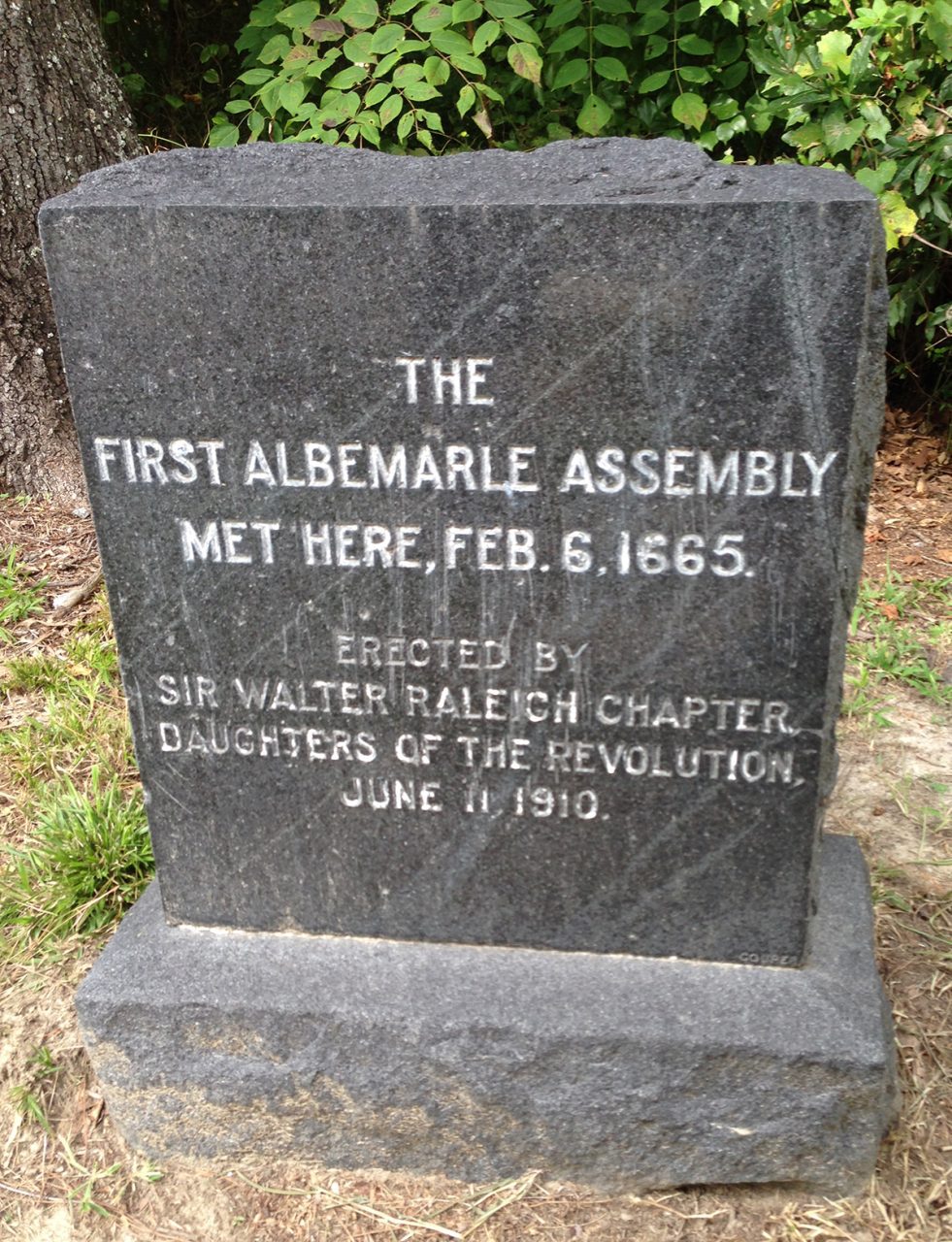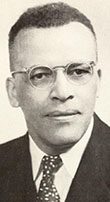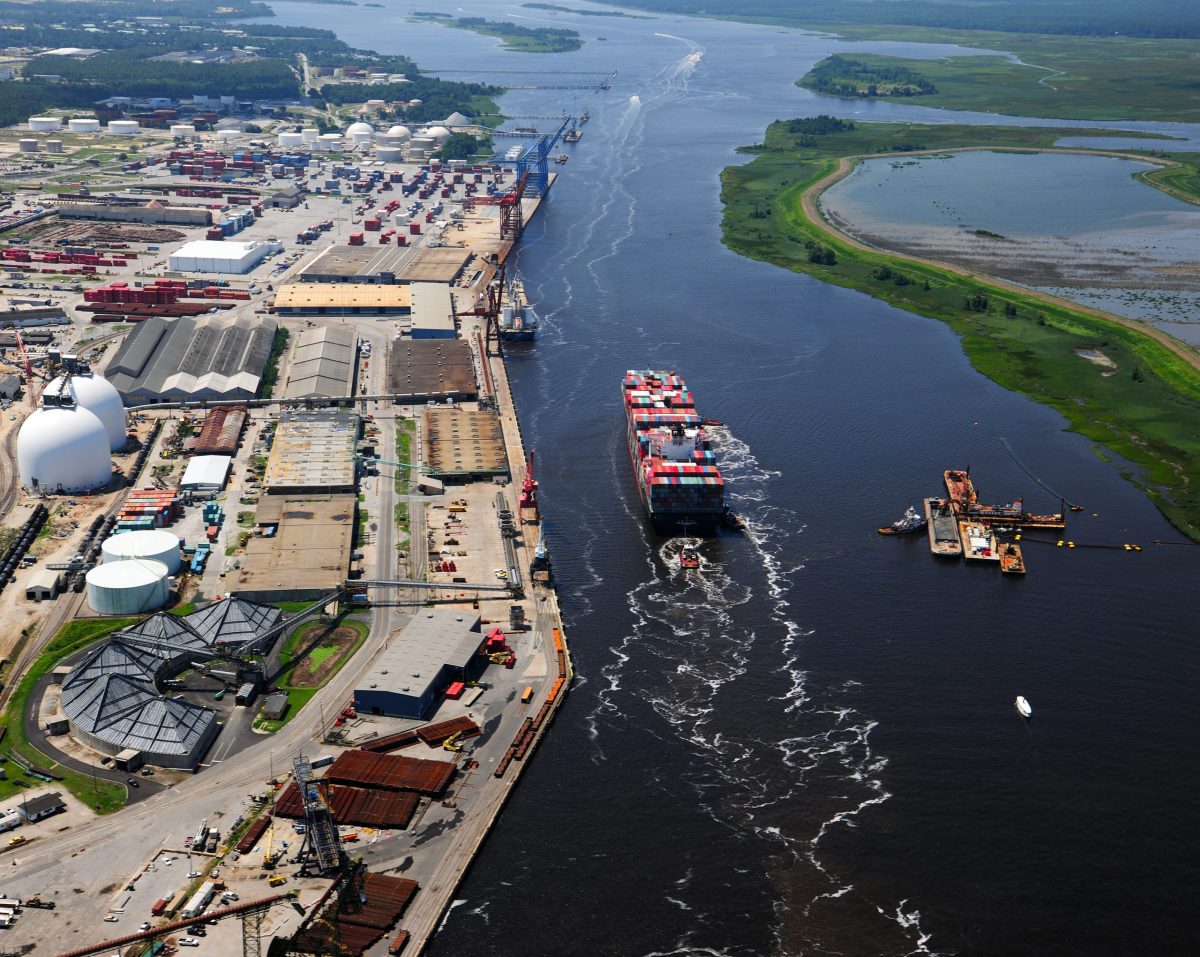
Though the downtown is now a collection of mostly 20th century buildings, Elizabeth City, the center of Pasquotank County government and trade, has roots going back to the earliest years of the Colony.
The area around Elizabeth City, originally home to the Chowan and Weapemeoc, was one of the first settled by the English in North Carolina.
Supporter Spotlight
Its recorded past can be traced back to one of the founding acts of the Colony in 1665, when a group met at Halls Creek and established North Carolina’s original legislative assembly.
This group acted prior to the 1669 Fundamental Constitutions of Carolina, the founding government document of the Carolinas that is now attributed to philosopher John Locke.
Though many of the Colony’s 1665 laws changed drastically in the decades that followed, today’s state government can be linked to this meeting on a knoll just 6 miles from today’s downtown Elizabeth City.
In 1910, the Daughters of the American Revolution placed a marker at what they believed to be the site.

The area that would become Elizabeth City remained small and rural throughout the 17th and 18th centuries. Nixonton, one of the first towns in North Carolina located on the Little River, was a commercial meeting place nearby.
Supporter Spotlight
Pasquotank County, founded in 1668, had a courthouse located at different points in the county before settling at Nixonton in the late 18th century.
Elizabeth City’s importance to the region can be traced to 1795 when a hurricane hit Albemarle Sound and silted up Edenton’s access to the Albemarle. Edenton depended on the Albemarle, but Elizabeth City took advantage of the newly constructed Dismal Swamp Canal and became a center for local and coastal trade.
Elizabeth City began to thrive as the town’s population grew in the years after its 1793 incorporation.
This population included a number of free African Americans who moved to the area to escape harsher legal treatment in Virginia.
The city hosted a number of artisanal shops, cabinet makers, and other features of a growing Southern town, making the city an early target during the Civil War.
It was vulnerable to Ambrose Burnside’s force from Roanoke Island. Citizens set the town on fire prior to the Union Army’s advance and fled on foot, leaving it a “dead town … dead as a graveyard,” as a Union Army officer described it.
Elizabeth City’s burning in 1862 contributed to its current cityscape.
Instead of having large surviving stretches of antebellum buildings like nearby Edenton or Hertford, Elizabeth City’s historical architecture is dominated by its late 19th century rebuilding.
The city is home to a considerable collection of Victorian dwellings. They line Main Street and can be found on Church and Road streets as well.
Author Catherine Bishir, curator of Architectural Records Special Collections at North Carolina State University Libraries, describes West Main Street as containing “a remarkably solid, varied, and intact grouping of closely placed late 19th- and early 20th-c. homes,” where at one point “a rhythmic row of multigabled Queen Anne dwellings nearly abuts the sidewalk.”
This rebuilding was powered by the city’s continued position as a center of trade and industry.
By 1896, Elizabeth City was home to 14 mills, three newspapers, 10 boarding houses and hotels, and a textile factory.
These businesses, along with the growth of peanut farming, helped push the city to become a center of economic and industrial prosperity in the region.
In the 20th century, Elizabeth City became a social and cultural center as well as an economic one.
Home to the Albemarle’s only historically Black university, Elizabeth City State University was founded in 1891 as a teacher’s college for Black men and women.

Elizabeth City State has since become an influential educational institution, training thousands of teachers and graduating distinguished alumni.
One of its earliest presidents, Harold Trigg, became the first Black member of the state Board of Education in 1949. In 1960, Elizabeth City also became the home of the College of the Albemarle, one of the state’s oldest community colleges.
Like many other eastern towns, Elizabeth City was not immune to the economic forces of deindustrialization in the late 20th century. Its population stagnated between 1960 and 2000. Many of the town’s mills closed, and its downtown emptied.
Lori Meads, education coordinator at the Museum of the Albemarle, has lived in Elizabeth City her entire life. She remembers frequent visits in her childhood to the multiple department stores downtown, all of which have closed.
Despite these challenges, Elizabeth City’s embrace of education and tourism earlier in the 20th century have helped keep it vibrant and successful into the 21st. There is some debate over the future of this vibrancy, however, specifically whether or not Elizabeth City will become a suburb of the sprawling Hampton Roads region.
Residents can certainly see the allure of Norfolk, Portsmouth, and other major nearby cities.
“Of course, people go up to Hampton Roads,” Meads said. “They have Top Golf.”
But, Meads emphasized, Elizabeth City has done enough work to offer amenities, businesses, and attractions within the city limits to keep people in town and prevent it from becoming just another bedroom community.
Taken on its own, the city has a number of attractive features to both old and potential new residents. It is a college town, with its two institutions of higher learning with a combined population of around 7,000 students, and many of its old buildings are being renovated and filled with coffee shops and boutiques.
There are museums, breweries and events like the Potato Festival, which takes over the city every May.







